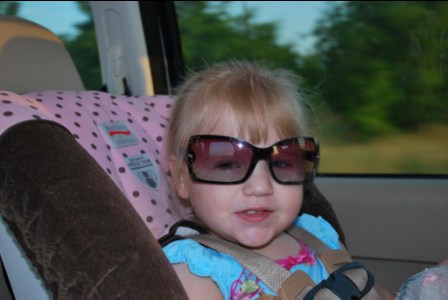
On July 23 we welcomed a new baby into our home. She was a day old. I realize that I write about toddlers not babies, so you may be wondering why I’m starting this blog with Baby E, but she’s pertinent to the topic. We have a Graco Snugride infant carrier. I have transported four children in the seat. It’s a great and safe seat. Baby E was so small, though, that the seat’s lowest strap slots were above her shoulders and as tight as the straps would go were not tight enough. I got a Chicco Keyfit so Baby E would be as safe as possible in the car.
I don’t remember how the other babies fit in the Snugride. I wasn’t as clued in to car seat safety then. I knew that a child was safest rear facing to the weight limit of the convertible seat or there’s an inch of shell above the head and I knew to make sure the incline was right, but I wasn’t as judicious about making sure the child was installed in the seat correctly. In September 2009 I went through the training to become a child passenger safety technician because child seat safety became that important to me.
I spend a lot of my time trying to educate parents about child seat safety. One of the biggest misconceptions I run up against is that turning a child forward facing on his first birthday is a milestone. The legal minimum to forward face is one year and 20 pounds. So yes, legally, your most precious cargo can face forward when he’s a year old and weighs 20 pounds. However, he’s still safest facing the back.
A baby has just entered toddlerhood on his first birthday. His body is barely developed. Let the seat do its job and absorb the impact of a crash. We all hope an accident won’t happen. Give your child the best chance of toddling away from it.

